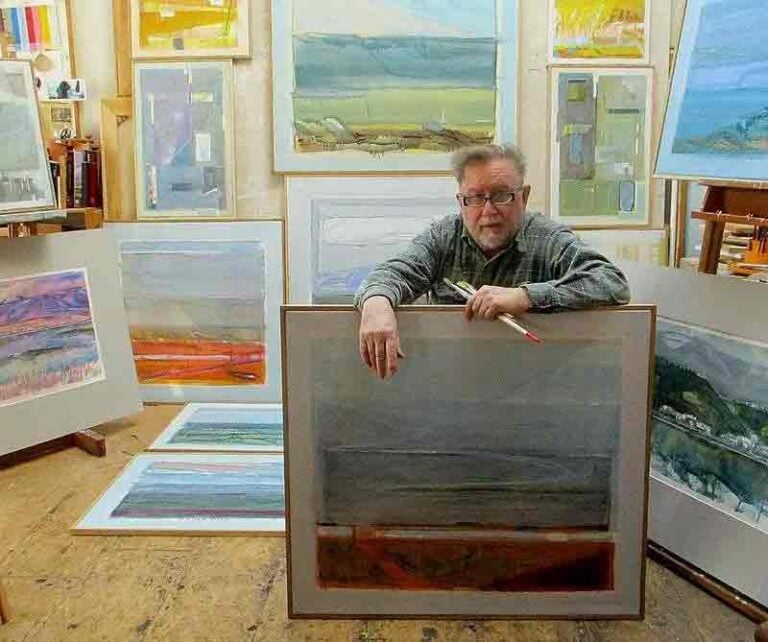Painter and teacher Gudmundur Ármann Sigurjónsson held his first exhibition at Mokkakaffi in 1961 and has been pursuing his art alongside teaching ever since. Expect him to step out of doors whenever the weather permits to capture his surroundings near Akureyri, the seasons, and the light on paper using watercolours and a remarkable technique.
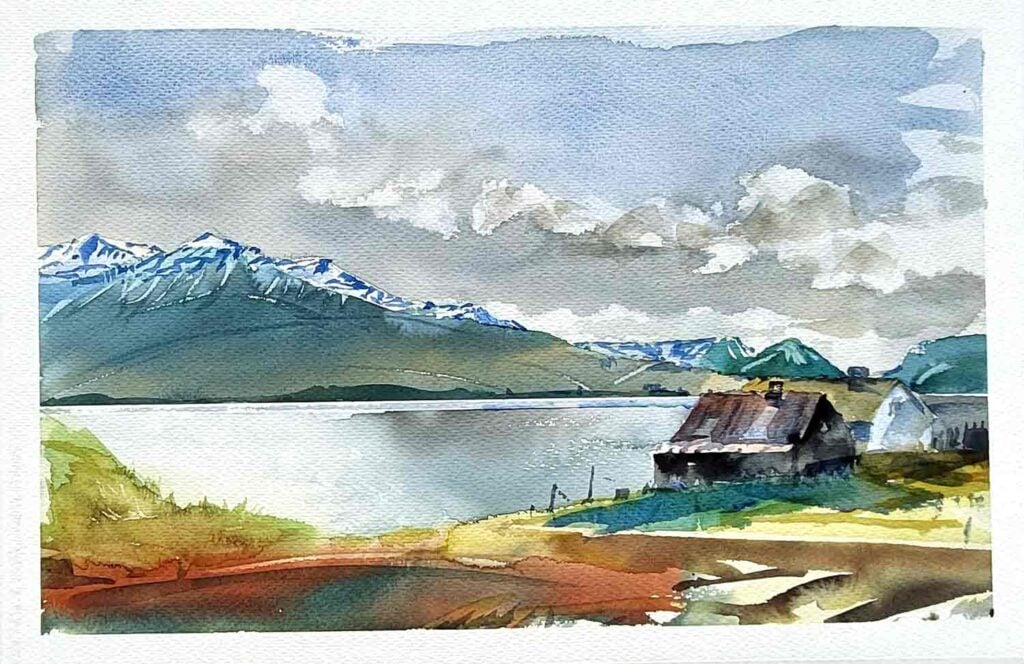
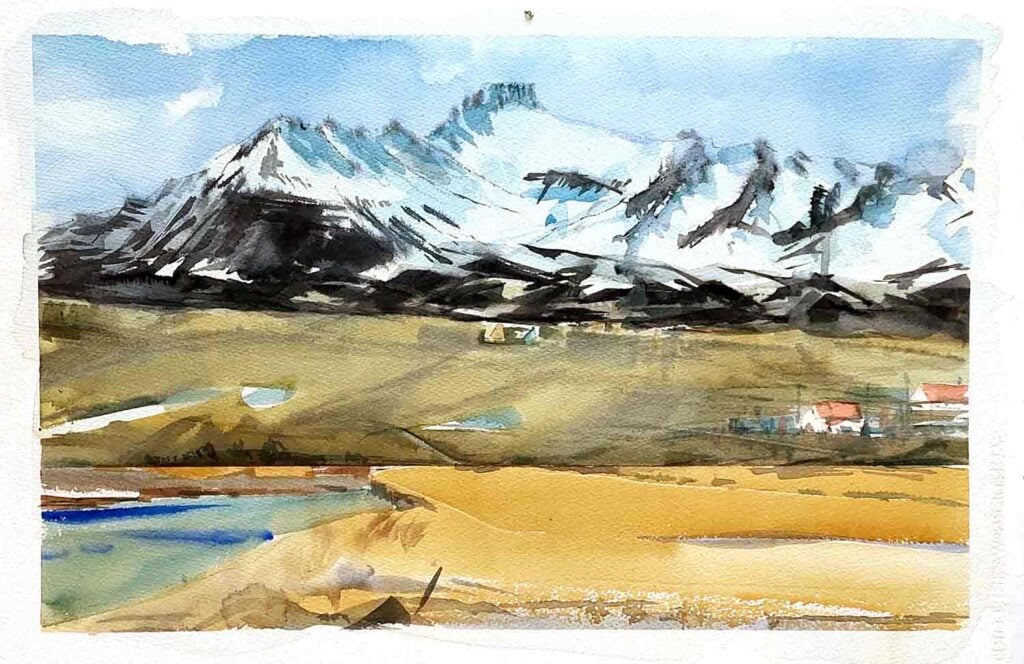
“I moved here in 1972, to Akureyri, having just recently completed my art studies in Sweden. It was actually Hördur Ágústsson [artist, designer, teacher, and scholar in visual arts] who sent me up north to teach art. Shortly after, I founded the Akureyri School of Visual Arts – which was then called Myndsmidjan – in collaboration with the Akureyri Art Society. Here, I have worked on my art, including graphics and oil paintings, while also teaching almost continuously since that time.”


Preferably No Rain and No Frost
In 2014, Gudmundur retired. “You could say that around that time, I started painting with watercolours outdoors. It’s become a tradition for me to head outside and paint as long as the weather is suitable – preferably no rain,” he says with a grin, “and the temperature shouldn’t be below freezing. But I make the most of the time when the opportunity arises to go outside, and I really enjoy it, in between working in my studio on large oil paintings and graphics.”
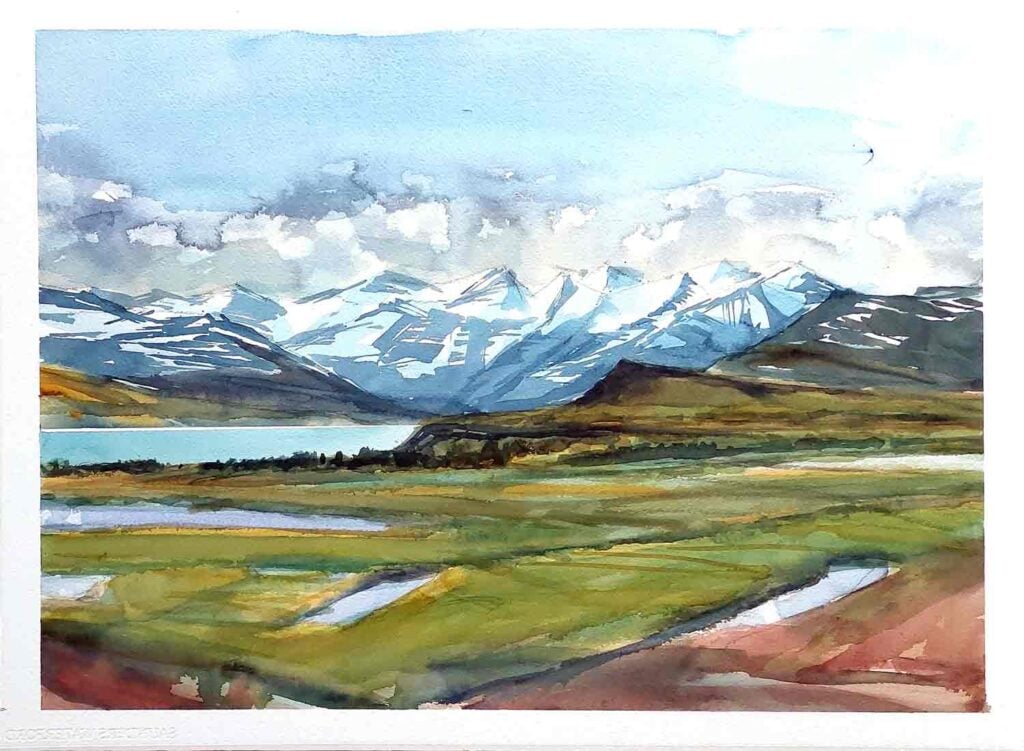
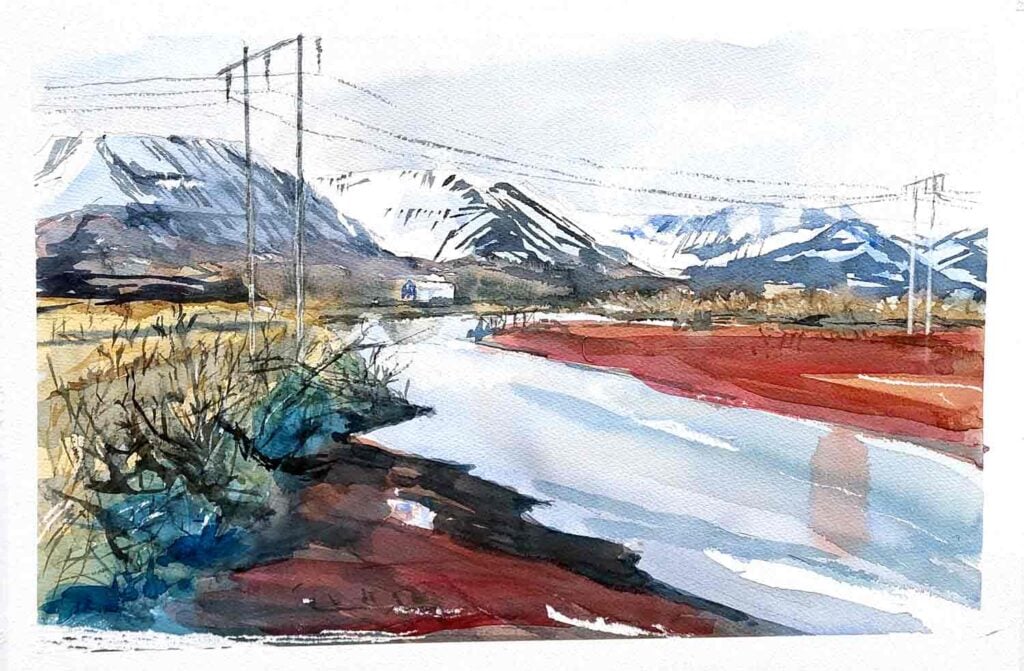
The Most Beautiful Valley in Iceland
But what is it that makes the environment around Eyjafjördur so special? It seems that everything in the area serves as inspiration for Gudmundur.
“Yes, that’s absolutely right. I don’t have to go more than half an hour at most to reach Svarfadardalur, and that place offers endless possibilities. Ásgrímur [Jónsson, painter] always said that it was the most beautiful valley in Iceland, and he regretted not discovering it until his later years. There’s an endless supply of beautiful motifs in Svarfadardalur and the Tröllaskagi peninsula as a whole – it’s simply a fairytale unto itself.”
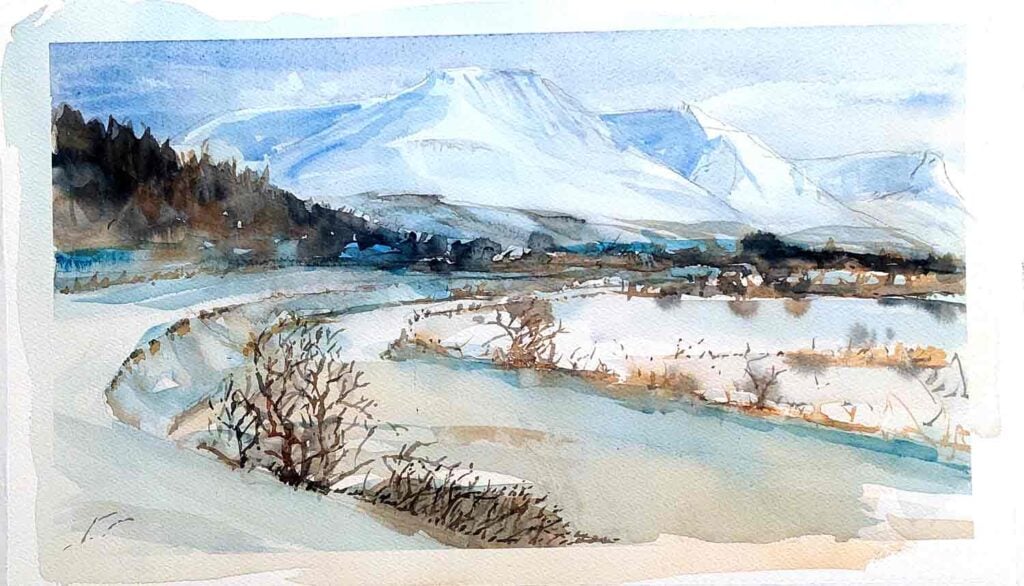
The Only Way to Capture the Light on Paper
When asked why he chose watercolours to capture the landscape around Eyjafjördur, Gudmundur explains that they are the most suitable medium for outdoor painting, which he has been doing in recent years. “Everything happens much faster with watercolours. With oil and acrylics, there’s a lot more involved—so many things you have to bring with you. I’ve used watercolours from the beginning, but I must say that when I met some painters from Sweden, the Faroe Islands, Norway, and Denmark, I saw that they used watercolours a bit differently than I had experienced before. Instead of applying the watercolour to dry paper with brushes, they used brushes that hold a lot of water and often painted on wet paper, letting the colours flow and blend without much brushing. I don’t use the brushes for anything other than controlling the flow and the colour to match the light I’m working with at the time, whether I’m painting the sky, reflections in water, or something else.”
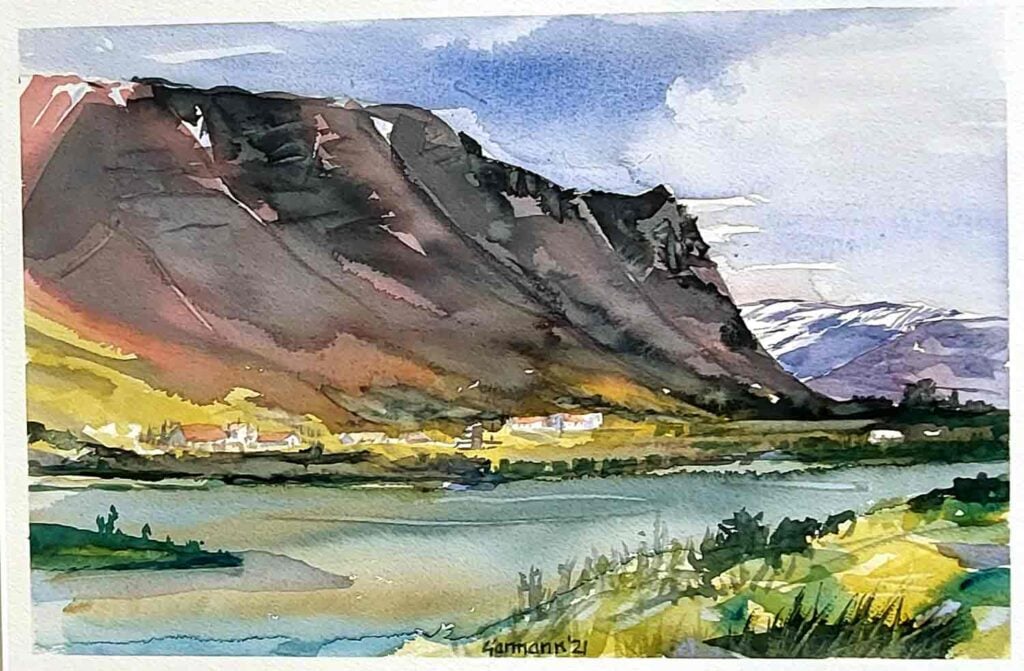
This technique is known as the “wet-in-wet” method, according to Gudmundur, and it has been adopted by Nordic artists like Lars Lerin, Anna Törnquist, and others. “This method offers much more light. It creates a brightness that you can’t achieve any other way, and ultimately, that’s my focus in my work—to capture the landscape, the season, and the light.”
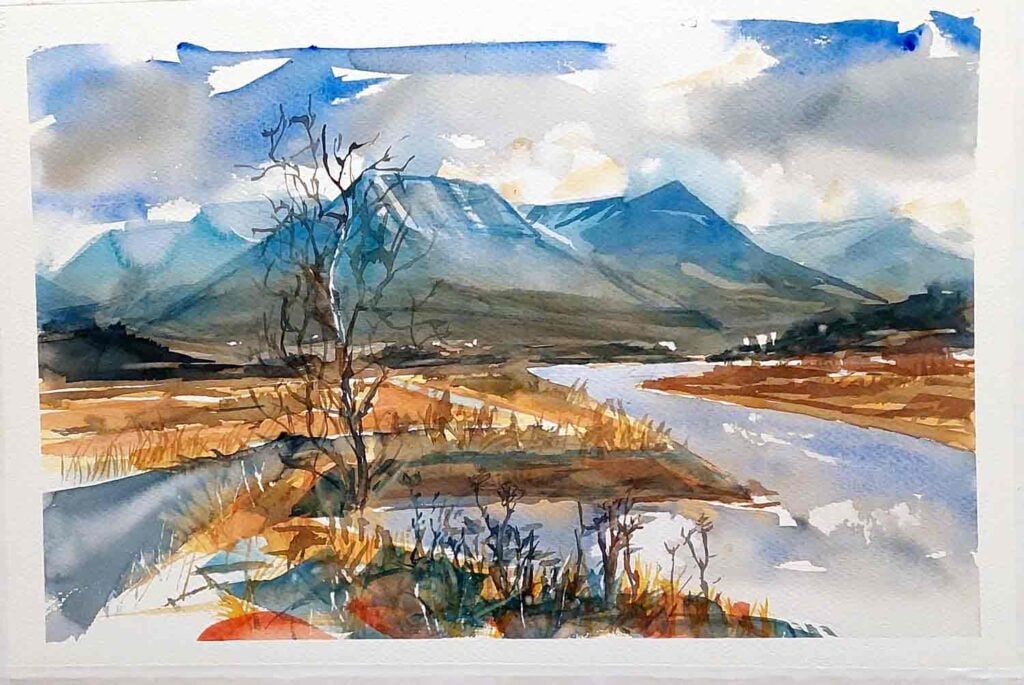
Text: Jón Agnar Ólason

